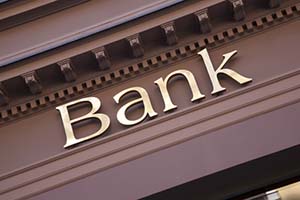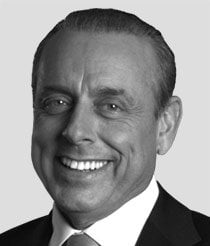The big three American banks - JPMorgan Chase & Co. (NYSE: JPM), Citigroup Inc. (NYSE: C) and Wells Fargo & Co. (NYSE: WFC) - laid out their earnings Friday.
We've been following big bank earnings all year. Back in Q1, I told you that all was not what it seemed with their earnings numbers, and why they were once again a danger to the system. And in Q2, I told you that while analysts were saying it was time to invest in the "too big to fail" banks, they were still a risky investment.
So has anything changed? Have the big banks gotten any better?
Here's the skinny on the big three - whether you should buy, sell, or hold - and what to do at specific price levels...
Why Big Bank Earnings Matter

America's "too big to fail" (TBTF) banks are all bigger now than they were before the credit crisis and after the Great Recession. And they'll get bigger unless they're broken up or implode to a point where they have to be unwound in the next crisis.
U.S. banks got bigger (and are in much better shape than their giant counterparts in Europe, Japan, and China) thanks to the Federal Reserve.
Profit Opportunity: The Subprime Auto Loan Market Is About to Collapse - Here's How to Profit
The bottom line is all the TBTF banks were in serious trouble as a result of the credit crisis, most bordering on insolvency, if not technically insolvent by honest measures of their capital ratios and reserve requirements.
The Federal Reserve had to rescue them because they were too big to fail, meaning if they did fail, there wouldn't be enough money in the FDIC's rescue pool to bail out depositors in any one bank, let alone all of them, who facing failure would have seen a run on each bank as depositors withdrew their money.
What the Fed did, besides initially provide unlimited liquidity to keep the banks afloat, and as their regulator help them hide their true state of borderline and actual insolvency, was come up with a grand experiment supposed to lower interest rates to stimulate economic growth called quantitative easing.
The real purpose of quantitative easing wasn't to lower interest rates; they were already at zero. Quantitative easing was a program executed directly with the big banks whereby they could buy massive amounts of U.S. Treasuries and mortgage-backed bonds, bid up their prices, and sell them to the Fed for a profit. QE continued for years to generate profits for the big banks and long enough to give them time to sequester bad assets in "bad bank" divisions and offload them to speculators.
European banks got initial help from the ECB, but their QE programs didn't start until much later, and the ECB didn't force giant European banks to offload bad assets. That's why American banks are in good (but not great) shape, and European banks are in trouble.
Here's a closer look at the big three...
[mmpazkzone name="in-story" network="9794" site="307044" id="137008" type="4"]
JPMorgan Chase
Of the big three American banks, mostly associated with retail banking on account of their retail bank branches and history as depository institutions, JPMorgan Chase has fared the best post-crisis and post-Great Recession.
JPMorgan, the largest U.S. bank by assets, posted better than expected third quarter results today, setting the tone in pre-market trading for a rally in bank stocks and index futures and the market's big up-move this morning.
Profit for the quarter came in at $6.29 billion, or $1.58 per share. Analysts had been expecting $1.39 a share. Surprisingly, profit in the bank's corporate and investment banking unit doubled from a year ago to $2.91 billion, based on higher debt and equity underwriting fees and an increase in advisory fees. Commercial banking had a 50% gain over the year-ago quarter, rising to $778 million, and the bank enjoyed higher deposit spreads. Costs continued to be pared down, falling 5.9%, and gains came from reducing set-asides for legal and regulatory legacy issues.
But the news wasn't really all that good when you dig deeper. The better than expected profit at $1.58 was 6% lower than a year ago. Return on equity, an important metric when gauging an investment in a bank, fell from 12% a year ago to 10% this quarter.
The bank acknowledged its trading, corporate, and investment banking upticks were based on central bank action, money market reforms, and business resulting from Brexit.
Of the three big banks whose earnings came out this morning, JPM has by far the best-performing stock, which has risen strongly since February's market sell-off.
Still, it's not a buy today. That's because it's had a good run and is up against overhead resistance. The 52-week high for JPM is $69.06, so even if the stock makes a new high, which it easily could, there's not a lot of upside ahead and buying in here would subject an investor to more downside risk than upside potential.
A falling ROE, lower profit than a year ago, the bulk of its earnings beat this quarter coming from corporate and investment banking based on central bank actions (that may change), money market reform (which will be behind us in November), and Brexit, which helped all the banks pick up some revenue (but now creates an uncertain future), means the ride may be over.
If you own JPM, hold it. But use stops to protect your profits. A tight stop on the way down to protect your profits close to the highs for the company would be $66. Below that, I'd want out if JPM falls back to $64 on account of firm-specific issues or a market sell-off.
If you're a speculator, today's pop creates a good spot to put on a short. If you sell JPM short here, a tight stop at $70 would be an excellent risk-reward play.
Wells Fargo
Wells Fargo's earnings weren't good, even though they beat analysts' expectations. They beat because analysts have been ratcheting down their estimates for two months now thanks to its cross-selling scandal. Earnings per share came in at $1.03, better than consensus estimates of $1.01, but below last year's same quarter of $1.05.
Wells' return on equity fell to 11.3%, continuing a drop it hasn't been able to arrest. The bank's highly profitable Community Banking division produced profits of $3.23 billion, down a whopping 9.5% from a year ago. And expenses as a share of revenue increased to 59.4%, way above the bank's goal of 55%.
Don't Miss: This is your ticket to bigger and better returns... and it won't cost you a penny. What are you waiting for? Read more...
As if that wasn't bad enough, NIM (net interest margin, the spread banks make on loans) fell from 2.96% a year ago to 2.82% this quarter.
Wells set aside $805 million for loan losses this quarter, but didn't earmark any big set-asides for legal and regulatory issues the bank's facing in the wake of its cross-selling scandal. That scandal is going to hurt Wells on all fronts and saddles it with legacy issues that will take years to overcome and work through.
Wells is only a buy here if you're a bottom-fishing speculator. It's a reasonable risk-reward play to buy the stock below $45 and use a $43 stop to get out if the trade doesn't work. Buying here provides a good dividend yield and is a worthwhile play.
If you own Wells, you might as well hold it here, for the same reason it might be a buy after falling hard on the heels of the scandal. Still, depending on your comfort level and your time horizon, if the stock goes lower, it's only going to get more painful.
While Wells can go a good bit lower, especially if it faces state and federal investigations that could result in massive fines, it's not going out of business and at some point will be a good turnaround story. I wouldn't recommend shorting it here, only because there are better short plays to make if the market falters in the weeks ahead.
Citigroup
Citigroup is a similar story to Wells, in that it beat expectations but still had lower year-over-year revenue and profits.
Citi's trading revenue rose 16% with the help of an accounting adjustment, meaning it may have been a one-time helping hand for trading. The bank also cited Brexit as a help in revenue, but looking back at Citi's second-quarter corporate and investment banking revenue, most of the Brexit gains came then, not in the current quarter.
The bank's stock recently broke out of a sideways pattern, which some investors might see as a buy signal.
With the bank's return on equity at a disturbingly low 6.8%, which is down considerably from last year's paltry ROE of 8%, and revenue down at Citi Holdings, the division that holds the bank's "bad assets," it doesn't make sense to buy the stock here.
Its upside might be 10%, but the risk of backsliding outweighs the upside opportunity and the stock's meager dividend yield of 1.31%.
If you own C, then hold onto it. If you're not a long-term holder - and I wouldn't be with that ROE and tiny yield - then get out if it falls back below $45 and find a better place to park your capital.
I wouldn't short Citi here. There's a small play to the downside, but not enough for me to commit my capital to a slow moving stock with limited profit potential.
This Is the Best "Retirement Stock" of 2016... And the good news is, it's trading for "pennies." But it won't be for long... its revenue is set to surge 4,709%. Learn the details of this $5 stock today while it's still "on sale." Read more...
Follow Money Morning on Facebook and Twitter
About the Author
Shah Gilani boasts a financial pedigree unlike any other. He ran his first hedge fund in 1982 from his seat on the floor of the Chicago Board of Options Exchange. When options on the Standard & Poor's 100 began trading on March 11, 1983, Shah worked in "the pit" as a market maker.
The work he did laid the foundation for what would later become the VIX - to this day one of the most widely used indicators worldwide. After leaving Chicago to run the futures and options division of the British banking giant Lloyd's TSB, Shah moved up to Roosevelt & Cross Inc., an old-line New York boutique firm. There he originated and ran a packaged fixed-income trading desk, and established that company's "listed" and OTC trading desks.
Shah founded a second hedge fund in 1999, which he ran until 2003.
Shah's vast network of contacts includes the biggest players on Wall Street and in international finance. These contacts give him the real story - when others only get what the investment banks want them to see.
Today, as editor of Hyperdrive Portfolio, Shah presents his legion of subscribers with massive profit opportunities that result from paradigm shifts in the way we work, play, and live.
Shah is a frequent guest on CNBC, Forbes, and MarketWatch, and you can catch him every week on Fox Business's Varney & Co.



